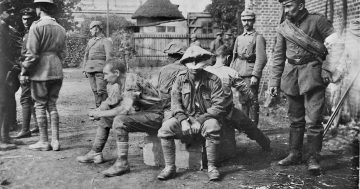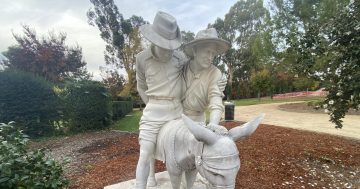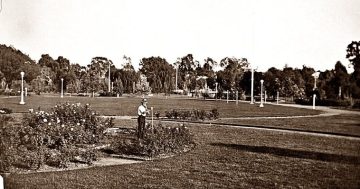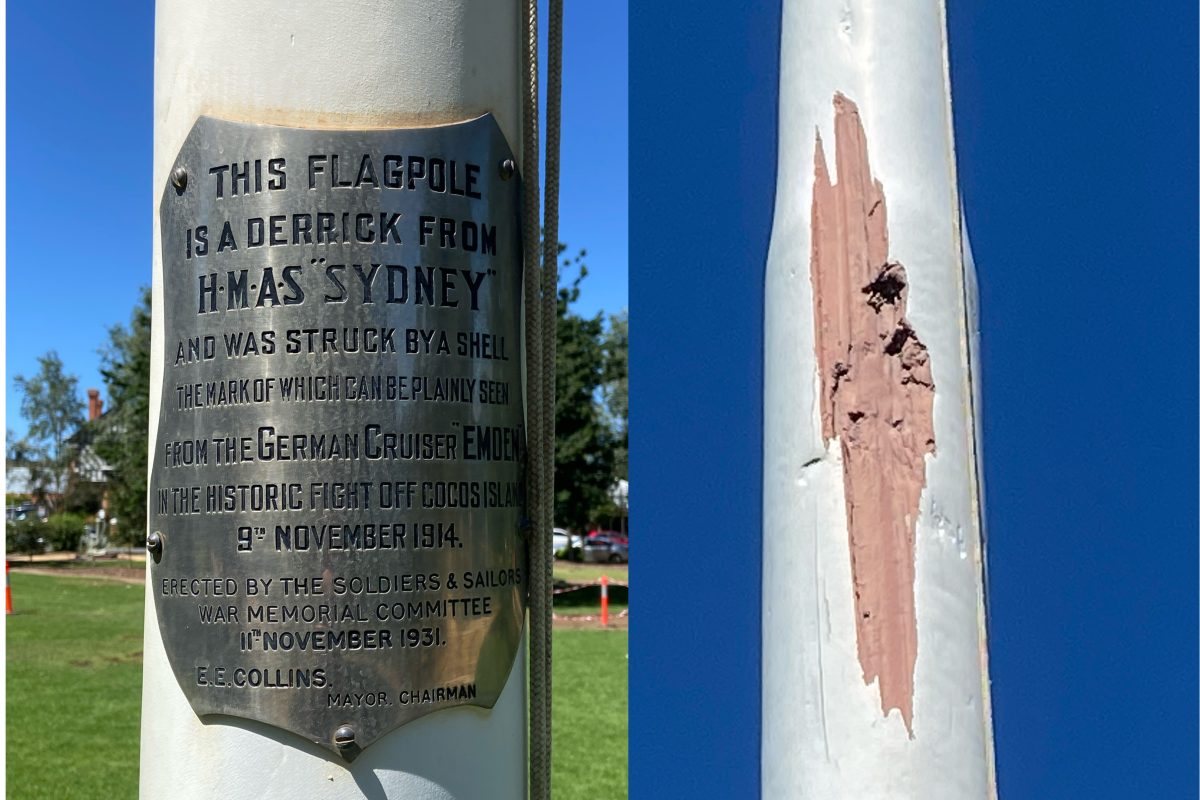
The historic Wagga flagpole made from part of a crane from HMAS Sydney that was damaged by a German shell in 1914. Photo: Chris Roe.
“The eleventh hour of the eleventh day of the eleventh month. What memories were recalled … in that simple, but solemn ceremony at the Monument, when thousands of Wagga citizens assembled in the hot sun and stood bare-headed for a few minutes whilst the clock sounded the historic hour, followed by the stirring sounds of The Last Post.”
This account from The Wagga Wagga Express of Armistice Day in 1931 could be applied almost without exception to every November for the past 106 years.
For Wagga, 1931 proved to be a landmark year, with the official opening of the Victory Memorial Gardens on Anzac Day in April, followed by the November dedication of a unique flagpole repurposed from a battle-scarred naval artifact.
The Returned Soldiers & Sailors League had led the decade-long fight to establish the Memorial Gardens and had also requested that the municipal council select a suitable flagpole to raise in the middle of the lawns.
In July, The Daily Advertiser reported that “an interesting war relic” stored at the Cockatoo Island shipyards had been made available by the defence department.
“It is a spar from the HMAS Sydney which sank the German raider, Emden, near Cocos Island, when convoying Australian Troops from Australia to Egypt.”
The 40-foot-long (12-metre) wooden spar or “derrick” had been part of an onboard crane used to lift lifeboats on and off the light cruiser that was famously involved in Australia’s first naval victory.
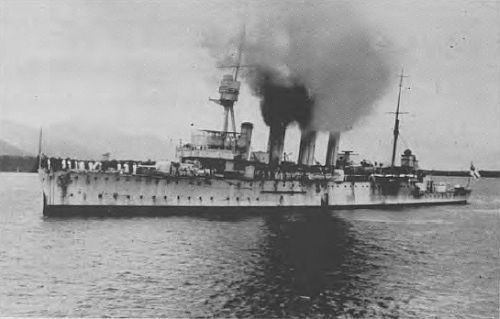
HMAS Sydney, which sank the German cruiser SMS Emden on 9 November, 1914. Photo: Naval Historical Society of Australia.
The Battle of Cocos took place on 9 November, 1914, just months after Australia entered the war. HMAS Sydney responded to an attack on a communications outpost by the German vessel SMS Emden, which had been wreaking havoc in the region.
In just two months, the German cruiser captured or sank 25 civilian vessels, shelled the Indian port of Madras and took out two Allied warships off British Malaya.
The Germans opened fire on the Sydney as soon as she came into range and managed to score a couple of hits, but the Emden was outgunned and the Australians responded with a torrent of shells over 90 minutes, disabling the vessel and killing many aboard.
The Emden was forced to beach itself and the surviving crew members were captured by the Australians, who had suffered only four casualties and sustained minor damage, including a missing chunk from one of the ship’s wooden derricks.
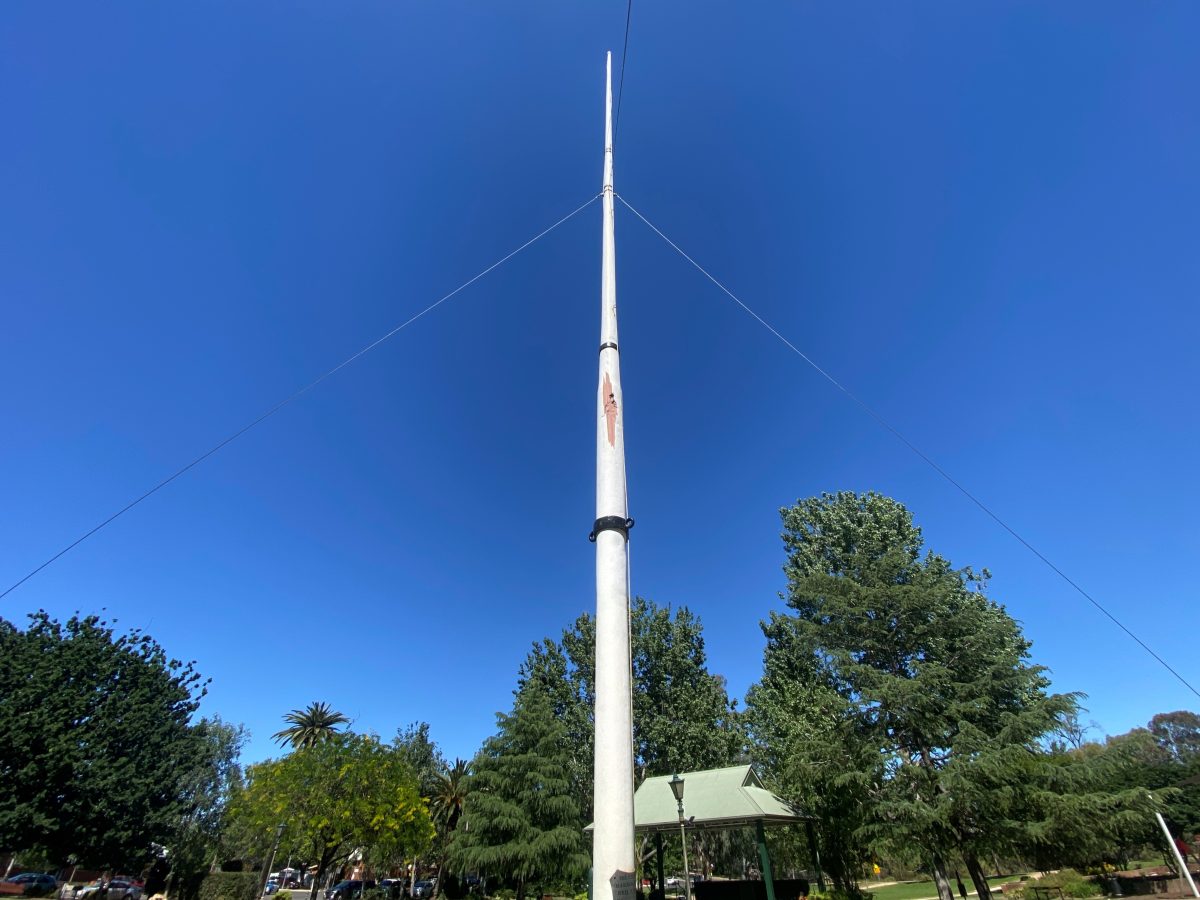
Wagga’s battle-scarred ”Victory Flagstaff”. Photo: Chris Roe.
There was great excitement in Wagga as the battle-scarred relic was delivered and work began to transform it into a flagpole for the new memorial gardens.
“To the original pole has been spliced a tapering 11ft length which will make the total length of the pole 50ft,” reported The Daily Advertiser in August 1931.
“Rings used for strengthening the splice are from the Sydney, as also is a broad metal eyeletted band fitted round the pole just below a splintery scar made by a shot from the German raider … this scar, for sentimental reasons, will be left untouched.”
Immediately after the Armistice Day ceremony, the mayor led the crowd to the centre of the Memorial Gardens, where he officially dedicated the “Victory Flagstaff” to the “perpetual memory of those who left this town and district at the call of the Empire”.
The Union Jack, Australia’s official flag until 1954, was unfurled by the mayoress, and Wagga’s brass band led the crowd in a round of Rule, Britannia before concluding with the national anthem, which in 1931 was, of course, God Save the King.
So, next time you walk through Wagga’s beautiful Victory Memorial Gardens, take a moment to check out the naval artifact that has stood in the city for 94 years and look at the unpainted scar, inflicted by a German shell 111 years ago.







